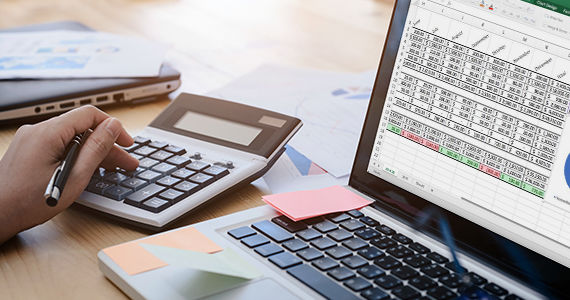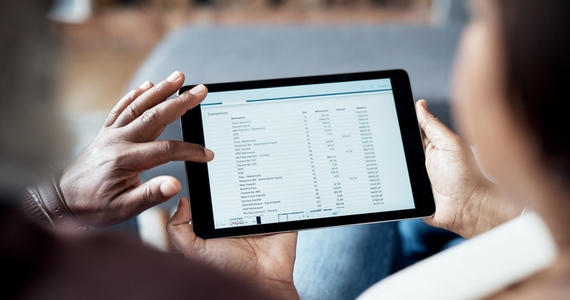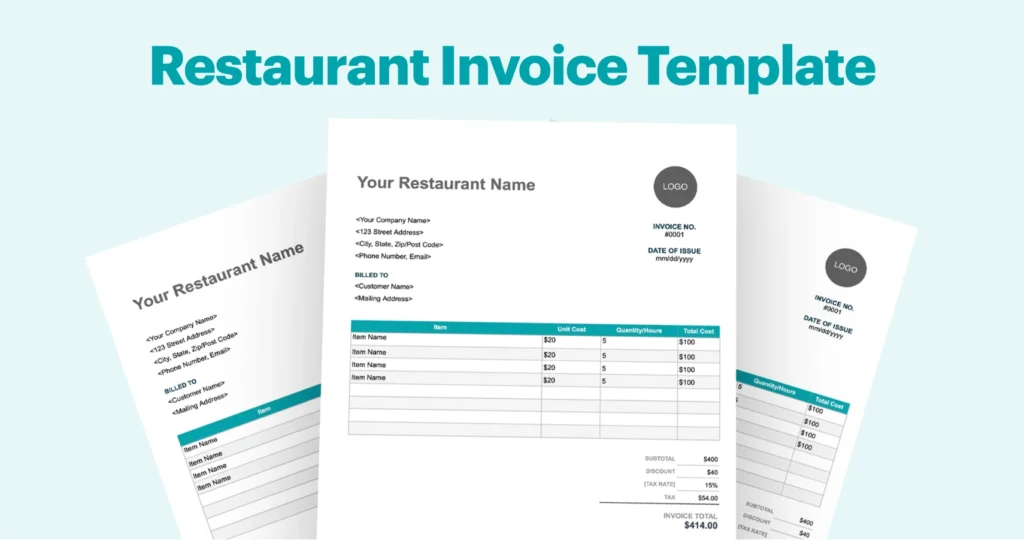A profit and loss statement (P&L) is a necessary tool for any restaurant, big or small. While every restaurant should have a P&L, great restaurateurs also spend considerable time with their P&Ls to understand the strengths and weaknesses of their business. Numbers, after all, need to be put into context if they are going to influence future decisions on cutting costs, changing a menu, assessing staff, or improving on an existing process.
This guide covers the P&L’s role in shaping your business. We’ll explain the most common items found on a P&L and explain how each component reflects the state of your business. Finally, we’ll outline the steps you need to complete to properly read and analyze a P&L, so that you can make data-driven decisions to increase the profitability of your business.

Use this customizable restaurant P&L template for Excel to analyze your operations, budget, and growth.
The Profit and Loss Statement: What It Is
A restaurant profit and loss statement (also known as a restaurant’s income statement, statement of earnings, or statement of operations) is a management tool used to review the total revenue and expenses of a business in a given period of time.
At its most basic level, a P&L reflects costs that are subtracted from sales. The result is a number that gives you a rough idea of a restaurant’s financial health. A profit (positive result) may mean that a restaurant is doing well financially, and future strategic decisions derived from the P&L should be geared toward making the restaurant even more profitable. A loss (negative result) means that it’s time to tweak (or overhaul) your business strategy and decide where you can cut costs or increase revenue.
A P&L gives you a clear view of what happened in your restaurant over any period of time. You should use your P&L to analyze your restaurant’s operations, budget, and growth. Review your P&L regularly at least once a month or every four-week fiscal period with your management staff to ensure they are aligned with your business objectives.
The P&L is the most important document your accountant will produce. If a restaurant can’t produce a sufficient positive result (profit) due to inconsistent sales or overspending, the restaurant will be forced to close or seek additional investment to sustain operations.
The Profit and Loss Statement: What It Isn’t
While it’s important to understand what restaurant income statements are, understanding what they aren’t is equally important. If you’re doing things without an accountant (although you really, really, really should use an accountant), he or she will be able to advise on how to reinvest your profit into the restaurant. For example, you can reinvest into inventory, marketing and promotions, or to pay down debt.
Do not confuse the P&L or income statement (revenue and expenses or sales and costs) with its financial siblings the statement of cash flows (cash in versus cash out) and the balance sheet (assets and liabilities). The P&L shows you the amount of income gained or loss generated by your restaurant operation. It will not show the amount owing on outstanding loans (balance sheet), or reflect bank deposits from credit card batches (statement of cash flows).
It’s important to distinguish profit and loss “operating activities” from the “financial activities” of receiving funds and paying bills. For example, if you cater an event on Monday, the sales will show in that month’s P&L as an operating activity, but the payment for that catering will be included on your statement of cash flows and balance sheet for the month that payment is received. Similarly, a case of tomatoes delivered today would be included in this month’s P&L, but the payment required four weeks from now would be included on your next month’s statement of cash flows and balance sheet. And, while your cash position is a great indicator of financial health, it does not necessarily tell you how well you are managing your operation.
There are a number of financial activities that will impact your bank accounts’ balance but never hit your P&L: sales taxes collected and remitted, waiter gratuities collected and paid, and loans taken and repaid, for example. Don’t rely on your P&L to show you your cash position. Conversely, don’t assume your cash position reflects your P&L health.

Download this free balance sheet template to track your restaurant’s assets, liabilities, and equity.
The Parts of a Complete Restaurant Income Statement
Getting the most out of your P&L starts with understanding all of its parts. Here are some of the most important items within your P&L, how they relate to each other, and how they can add context to your understanding of your business.
Gross Margin
A gross margin is the financial result of operating activities, usually expressed on an income statement as [sales – cost = profit]. Operating activities are generally defined as “core business activities.”
The “big three” core business activities for a restaurant are selling food and beverage (revenue), producing food and beverage (cost of goods sold or CoGS), and labor – employing sales (front of house) and production staff (back of house). The combination of CoGS and labor is generally referred to as “prime cost,” since these are the primary expenses involved in producing revenue. Think of these as costs that are essential to selling goods (you couldn’t sell the wine without the wine and the person to sell the wine, for instance).
Each menu item has its own profit margin as expressed by [menu price (revenue)] – [CoGS] = [gross margin] (or gross profit).

Use this customizable restaurant P&L template for Excel to analyze your operations, budget, and growth.
Prime Costs, Operating Expenses, and Controllable Profit
Prime cost is the total of cost of sales plus all payroll-related costs, including management salaries, hourly staff, and payroll taxes and benefits. Prime costs are the majority of the costs that are controllable by management in the short term, and controlling these costs is the best and most direct way to increase your net profit.
The closer a cost is tied to sales (such as CoGS and hourly labor), the more control your management has on the final number on the P&L. Management is able to influence controllable costs and profit to a much greater degree than non-controllable and fixed expenses like rent, taxes, interest, and insurance.
There are some operating expenses that are generally grouped into categories such as direct operating expenses, marketing, and utilities. Operating expenses tend to be the most flexible, but there are a number of expenses that don’t bend to management influence. For example, if your dishwasher breaks, you have to fix it. If you break a tray of glasses, you must replace them. You have to pay your utility bills to keep the lights on. You can introduce new policies to prevent future breakage and reduce energy consumption, but you will continue to incur these costs regardless of sales or customers.
Cost of Goods Sold (CoGS)
“Cost of goods sold” is the raw material costs of your menu items – the actual amount of food and beverage used to produce your food and beverage sales.
[Beginning inventory of F&B] + [Purchases] – [Ending inventory] = CoGS for the period
Or:
The amount of food and beverage you start with: [Beginning inventory]
+
The amount of food and beverage you bought: [Purchases]
–
The amount of food and beverage left: [Ending inventory]
=
The amount of food and beverage used: [CoGS]
Beginning inventory is the amount of food and beverage you have in stock on the first date for the date range you’re reporting on.
Purchases during that same period are all food and beverage invoices added to your inventory.
Ending inventory is the food and beverage items you still have at the end of the same period.
Normally, CoGS is expressed as a ratio of a percentage of cost-to-sales. These ratios are usually categorized as follows:
| Revenue / Cost | Standard ratio range (%) |
| Food cost / Food sales | 25–40% |
| Beverage (non-alcoholic) cost / Beverage (non-alcoholic) sales* | 10–30% |
| Wine cost / Wine sales | 30–50% |
| Draft beer cost / Draft beer sales | 20–40% |
| Bottled (canned) beer cost / Bottled (canned) beer sales** | 30–35% |
| Liquor cost / Liquor sales | 10–20% |
| Bar mix and consumables cost / Liquor sales*** | 5–25% |
Generally accepted ratios vary from market to market and concept to concept. Your percentage of costs will be largely determined by how much you sell something for versus how much it costs to produce. The cost percentage will be generally determined by the bestsellers on your menu, rather than the menu as a whole. As a general rule, your combined CoGS and labor costs should not exceed 65% of your gross revenue – but if your business is in an expensive market, you should aim for a lower percentage.
*Food and non-alcoholic beverage are sometimes combined, but this is less common.
**Draft and bottled beer is sometimes combined, but this is not recommended. The serving, storing, and pouring methodology for each is different, as are the costs.
***Bar consumables are sometimes combined with non-alcoholic beverage or liquor; use your own discretion to determine with your accountant if this is right for your restaurant.
Theoretical Cost
While your theoretical cost is not part of your P&L, it’s important to compare your theoretical CoGS to your actual CoGS on your P&L statement. “Theoretical cost” is your ideal spend – but the cost of the food and beverage you actually used is not always equal to what you should have used based on your recipes. Raw material costs can change, and then there’s waste, inconsistent portioning, and shrinkage (the polite term for employee theft) – these can all create differences in theoretical versus actual costs. Your accountant will produce your actual cost using your inventory and invoices as inputs.
Part of managing and analyzing restaurant costs is to consistently compare what should have happened (theoretical CoGS) with what actually happened (actual CoGS) – and then work on narrowing the gap.

Use this restaurant invoice template to create invoices with ease, saving you time and helping you get paid faster.
Expense Report
While your expense report is separate from your P&L, you’ll want to refer to it if you notice any discrepancies in your expenses on your P&L. Your expense report is your line-by-line breakdown of all invoices, the total of which are reflected in your P&L. Your accountant should provide a detailed expense report that you can refer to if you notice you’ve spent WAY more on, say, music and entertainment from one month to another.
How to Read and Analyze a Profit and Loss Statement
P&Ls are generally organized and analyzed from left to right using a three-column approach: actual this year, budget this year, and actual last year. Each column of numbers should be followed by an appropriate cost-to-sales ratio in the form of a percentage. CoGS and labor ratios will generally line up with their respective sales categories, while most expenses will be expressed over sales.
Accounting line items are organized from top to bottom, from most controllable to least controllable. Generally, the section headers are:
- Sales
- CoGS
- Labor
- Operational expenses
- Promotional expenses and marketing
- Repairs and maintenance
- Occupancy (rent, insurance, etc.)
- Corporate overhead (management fees, franchise royalties, etc.)
If you’re running a large, complex operation, you will have many more line items within each section. If you’re running a simple coffee kiosk, you’ll only have a few line items.
Now that you have data, you’ll need to know how to best leverage it for your business. Here is your step-by-step guide to analyzing and understanding your P&L.
#1 First things first: check the math. Seriously – mistakes are always made, and you can waste a lot of time analyzing numbers that turn out to be errors. Double-check and then triple-check that the math on your P&L is correct before you begin to sift through data.
#2 Reading from left to right, examine each line item for variances. Variances are the differences between what actually happened this year versus last year (actual last year), and what you had planned to do (this year’s budget). Look for big differences (positive and negative) between the previous year and your plan/budget. If you haven’t made a budget or a plan for each year, now’s the time!
If you don’t want to do the math, ask your accountant to add two columns to calculate the variance: [this year] – [last year] and [this year] – [budget]. The variance columns should also show the rate (or percentage) change between this year over last year. Remember not to get tripped up by large percentage variances versus large budget differences. Look for large budget dollar amount differences first, then move to the difference in percentage for context and perspective.
#3 Ask questions. As you read from left to right and down the statement, you’ll begin to get a sense of the narrative of your restaurant. Ask yourself some of these questions to begin to flesh it out:
What did you accomplish this year?
How does it compare to last year?
How does it compare to what you had budgeted?
Did you make a profit or lose money?If you see a positive result at the end, great job. If you see a negative result: don’t panic. When you’re just starting out, it may be normal to experience the growing pains of overstaffing or adjusting to the rhythms of your customer traffic.
#4 Reverse the questions. Ask more questions to begin to connect the dots of your operating decisions to your P&L numbers. For example:
How is your new menu influencing food sales?
What impact is the new wine by the glass program having on your wine sales and costs?
How is the decision to open for breakfast influencing sales and labor?
Actions have consequences, so try to understand the decisions you’re making and how they are affecting the big picture. When you begin to apply reason to the numbers, you’ll start to understand how you can make some decisions to adjust your operations or scale on things that are working well for your restaurant.
#5 Put the small details in perspective. Focus on the big numbers and don’t sweat the small stuff. Time is valuable: for example, if you and your manager’s collective time is worth $200 per hour and you spend fifteen minutes discussing a $25 variance, you just spent another $50 questioning the $25 you already spent. Unless that discussion will yield significant future savings, focus the discussion on the important stuff and don’t sweat the rest. Instead, dive into the numbers that either appear to be the most perplexing and/or have the biggest impact on the bottom line.
#6. Make a stop at the line that says “EBITDA.” This is your earnings before interest, taxes, depreciation, and amortization. If it’s negative, find out why. Where are your cost overruns and revenue shortfalls? What are you going to do to about it?
#7 Finally, look at the bottom line. After EBITDA, there will be a “bottom line.” This is your “net profit” or “net income.” Is it a positive number? Good. This means you’re paying all of your bills and your staff. If your net profit is greater than 10% of sales, that’s really good. If it’s 15% of sales or greater, great news – you’re well on your way to running a successful business!
If you’re not earning a profit, you won’t need to pay any taxes on income. But if you’re not able to cover your opening capital investments (generally amortized over time) or the interest on loans, you will need to look closely at your revenue and controllable costs. If you’re unable to cover your loans and opening costs, now’s the time to start questioning the viability of your business.
A P&L is like a report card for your restaurant. Large, positive changes in revenue over last year get an A. Minor improvements get a B. Cost overruns over budget get a C or a D, depending on the magnitude. Any increases in expenses that exceed increases in revenue are big red flags.With the knowledge you gain by measuring your performance, you should be able to answer the following questions:
- How well am I managing the restaurant and my time?
- Can my restaurant be busier?
- Is this the most profit my restaurant is capable of producing?
By allocating your time to your highest priorities, marketing effectively, and managing costs efficiently, you hope to get a little return on investment (ROI) for all your hard work. The results of everything you do as a restaurant owner is measured by one magic formula for net profit: revenue minus expenses. All of your efforts are captured in the details of the P&L statement.

Use this customizable restaurant P&L template for Excel to analyze your operations, budget, and growth.
When you begin to understand the value of a profit and loss statement, you can begin to use it as a check-in on the health of your restaurant. While a P&L isn’t the end of the story about your business, it’s a significant tool you can leverage to assess your successes and opportunities for improvement.
Understanding your P&L is the key to maximizing your restaurant’s profits or making some tough decisions for the sake of long-term viability. Good luck!
Download our free inventory template
Sign up for our free weekly TouchBistro Newsletter







